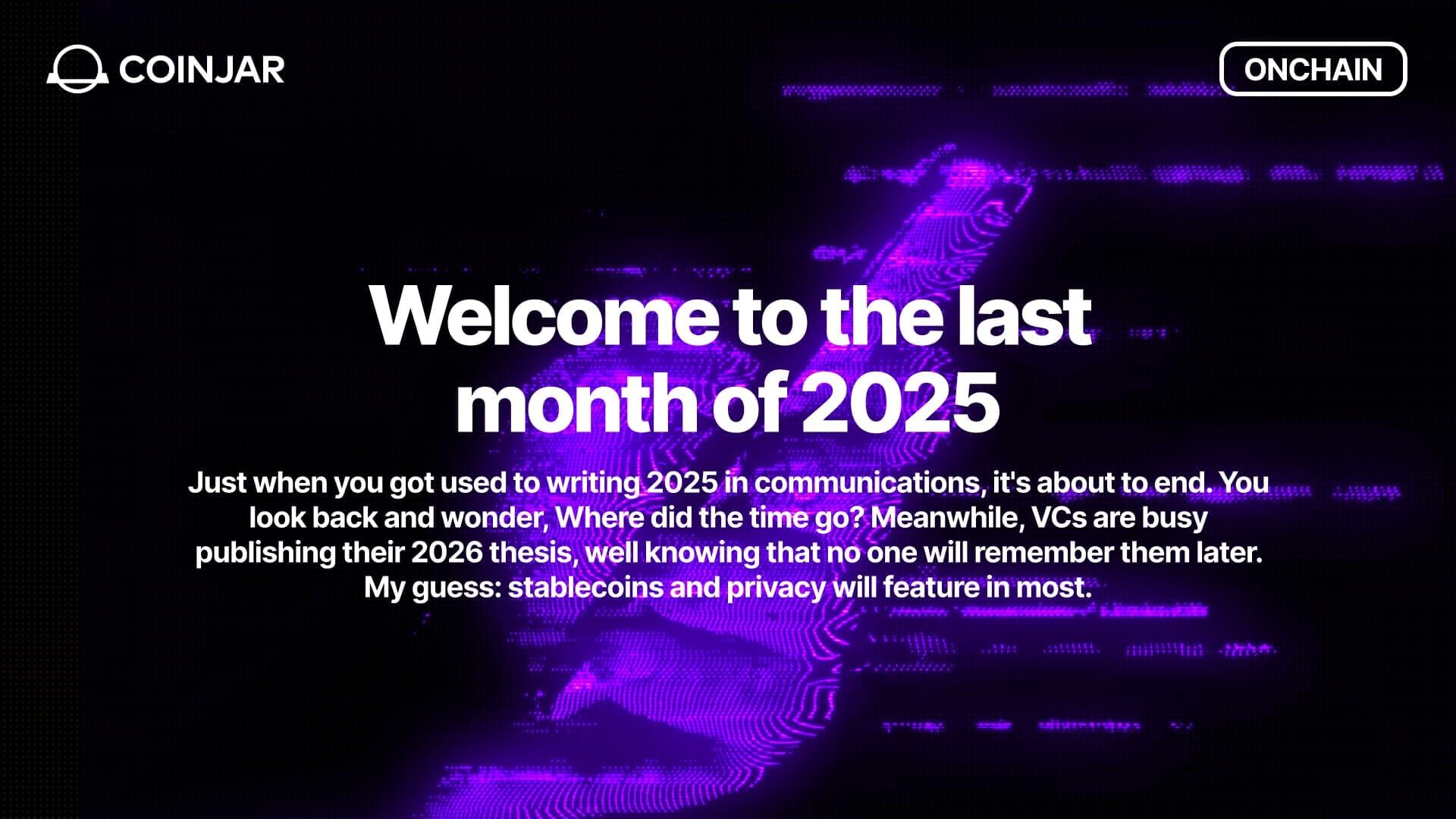Get $20 in free Bitcoin when you sign up and buy $50+ in crypto before January 31, 2026. Terms apply.
Onchain: Sell the news, Happy Bears, and RPGF going brrr
January 17, 2024
Share this:

Story One
Sell the news
Now that 11 ETFs are approved, issuers have started engaging in a fee war, slashing their usual costs, with Blackrock charging 0.25% and Bitwise setting its fee at just 0.2%. Then Franklin Templeton entered the scene, placing its fees at 0.19%. The race to the bottom is on.
Despite the discounts, institutions didn't buy enough to counteract the crypto crowd selling. In typical sell-the-news fashion, Bitcoin holders started getting rid of their bags, so Bitcoin just marked spot 99 of assets in terms of price performance over the past seven days. Not the rally some had hoped for, but maybe the one we deserve.
But all hope is not lost. Institutions' pockets are deep, and the next bullish Bitcoin narrative is just around the corner: the halving. During the halving, Bitcoin mining rewards are cut in half, reducing supply, which has usually led to price increases. However, whether that benefits the network's overall health remains to be seen, with CoinShares suggesting this halving could lead to an exodus of miners, as they might become unprofitable.
Takeaway: Bitcoin ETF is great stuff depending on who you ask. For one, even Gary finds it a bit ironic, but it offers some legitimacy. The more pressing question now is, what comes after the halving? If miners exit en masse, that might be in the interest of centralized institutions but not so much in ours.
Story Two
Happy Bears
If you feel a little bearish on vibes after spending too much time reading TradFi's takes on crypto, there's one place where you can still find the crypto-anarchists living in the spirit of chaos, experimentation, and a lot of drama: Cosmos. It's also home to the next hyped alt L1 testnet launch: berachain.

Wonder why on earth a Layer-1 launch made it into this newsletter when the latest meta was L3s? Mostly because of Berachain's unapologetically crypto-native website. Not to spoil it, but you don't scroll down there. 🐻
Berachain also deserves some credit on the tech front. The pseudonymous team has built an EVM-compatible chain with additional features to enhance the user experience. Or, as they call it, EVM +.
With a proof of liquidity consensus algorithm, the Beras aim to foster systemic liquidity building, solve stake centralization, and become a prime place for Cosmos DeFi.
Takeaway: The memes are strong in this one. That's nearly a guarantee of success in crypto these days. So, if you're tired of TradFi discussing Bitcoin, why not hang out with bears instead? One thing is sure: the risk of them getting TradFi approval is pretty low. That's a feature.
Story Three
RPGF goes brrr

While tech companies are welcoming the new year with massive lay-offs, the only thing that's being let go at the Optimism DAO is the idea that public goods can't be funded sustainably. Optimism, home to thriving L2s like Base, has distributed 30 million OP tokens (~ $100 million to more than 501 contributors via RPGF). Yet another acronym in crypto. This one stands for retroactive public goods funding and describes a mechanism by which developers of public goods receive funding after they build something. After all, it's a lot easier to judge the usefulness of something after it exists and not when it's still in the idea phase.
Just like countries build roads to enable citizens to go places (work), crypto devs build tools that are useful for the entire ecosystem but can't be monetized. While countries finance their infrastructure via taxes, Optimism now finances its' contributor ecosystem using its treasury.
The current fund distribution was already the third iteration of Optimism running its RPGF program, funding 643 projects in total now in categories like infrastructure, education, governance, and dev ecosystem.
Takeaway: RPGF is a feel-good crypto use case. Enabling the collective to vote on what's been useful to them could even be extended beyond the realm of web3. I, for example, would like to retroactively fund the person who put a free public bookshelf in my neighborhood.
Yet, there should be some thought about avoiding keeping zombie projects alive without the prospect of making it.
Fact of the week: When meeting a grizzly in the wild and thinking you can outrun it, think again. Despite their size, these bears can run fast, up to 30 miles per hour. Your speed is not grizzly speed. Your best bet is avoiding eye contact (crypto incels have mastered this one anyway) and walking away slowly if the bear isn't approaching. If it is, stand your ground and curse yourself for leaving your parents' basement.
Naomi for CoinJar
The above article is not to be read as investment, legal or tax advice and takes no account of particular personal or market circumstances; all readers should seek independent investment, legal and tax advice before investing in cryptocurrencies. This article is provided for general information and educational purposes only. No responsibility or liability is accepted for any errors of fact or omission expressed therein. CoinJar, Inc. makes no representation or warranty of any kind, express or implied, regarding the accuracy, validity, reliability, availability, or completeness of any such information. Past performance is not a reliable indicator of future results.
Share this:
On/Offchain
Your weekly dose of crypto news & opinion.
Join more than 150,000 subscribers to CoinJar's crypto newsletter.
Your information is handled in accordance with CoinJar’s Privacy Policy.
More from CoinJar Blog

Introducing Travel Rule Support for Your CoinJar Address Book
December 12, 2025Save time and simplify travel rule requirements for your crypto transactions. A new feature is now available in your CoinJar Address Book, designed to make your cryptocurrency...Read more
Introducing CoinJar AI
December 9, 2025A portfolio and market assistant built into CoinJar We are pleased to introduce CoinJar AI in the US and Australia. CoinJar AI understands your portfolio, tracks the market,...Read more
Onchain: Welcome to the last month of 2025
December 3, 2025Just when you get used to writing 2025 in communications, it's about to end. You look back and wonder, Where did the time go? Meanwhile, VCs are busy publishing their 2026...Read moreYour information is handled in accordance with CoinJar’s Privacy Policy.
Copyright © 2025 CoinJar, Inc. All rights reserved.
CoinJar, Inc. is a registered Money Services Business with FinCEN and licensed as a money transmitter, NMLS #2492913. For a list of states in which CoinJar, Inc. is licensed or authorized to operate, please visit here. In certain other states, money transmission services are provided by Cross River Bank, Member FDIC.
This site is protected by reCAPTCHA and the Google Privacy Policy and Terms of Service apply.